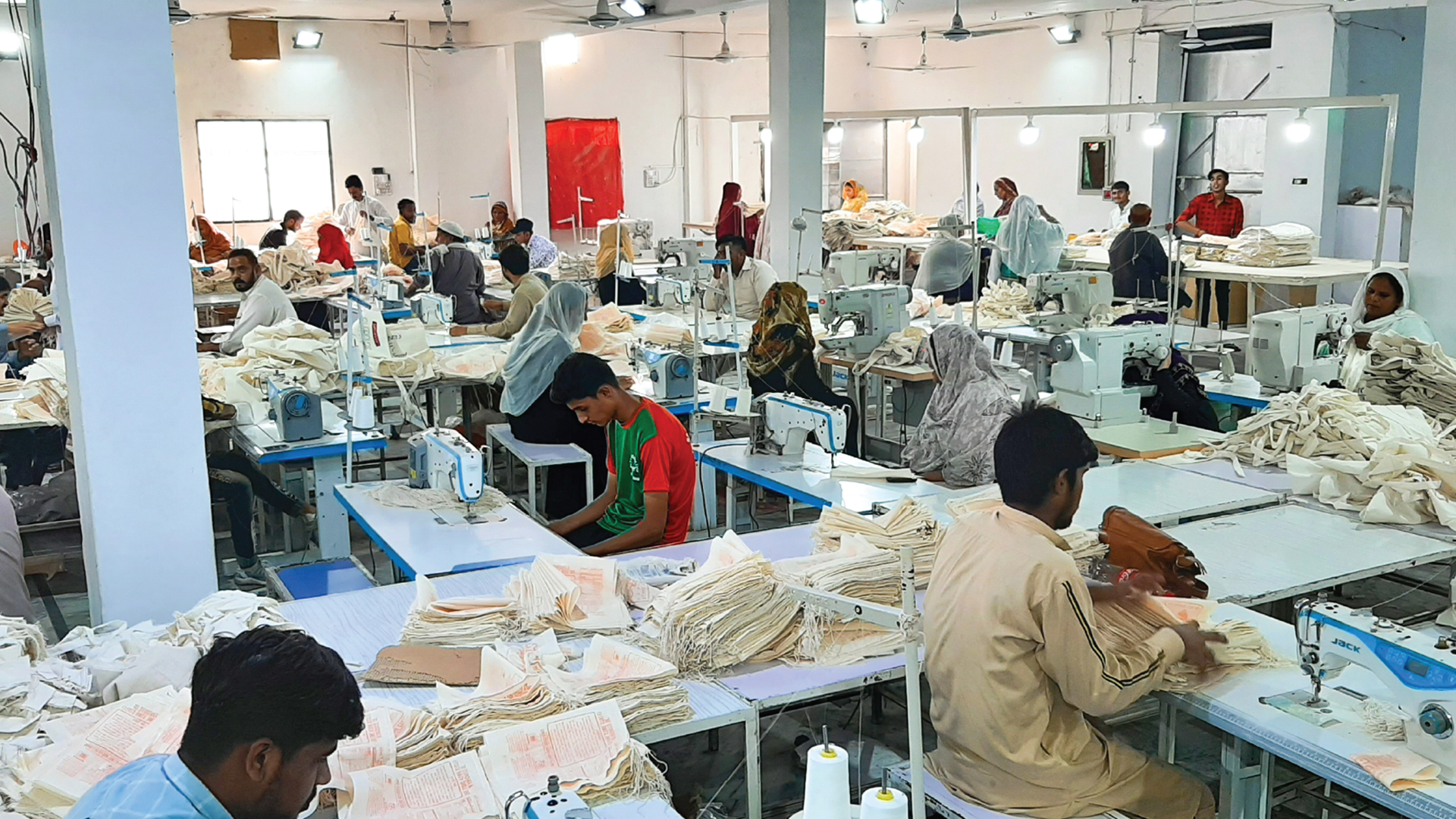1. Raw Material Selection
Finishing: Pre-washed, bleached, dyed, water-repellent coating (optional).
Cotton Fabric TypesCanvas cotton (4 oz – 16 oz; thicker = stronger bags).
Organic cotton (eco-friendly, GOTS certified).Recycled cotton (made from garment/fabric waste).
Weaving Style: Plain weave (durable), twill weave (softer, flexible).
 2. Cutting Process
2. Cutting Process
Fabric Spreading & Cutting
-
- Fabric rolls are spread on cutting tables.
-
- Manual cutting with scissors for small-scale.
-
- Die-cutting or CNC fabric cutting machines for mass production.
-
- Optimization: Nesting patterns to minimize fabric waste
Shoulder-length vs. hand-carry.
3. Stitching & Assembly
Stitching Methods
Lockstitch: Strong seams for bag sides.
Overlock/Serger: Prevents fabric fraying.
Double Stitch / Cross Stitch: Reinforcement on handles.
Handle Attachment
Cross-stitched for load strength.
Rope handles (eyelets + knots).
“
4. Printing & Branding
-
Techniques
-
Screen Printing: Best for bold, durable logos.
-
Heat Transfer Printing: For complex/multicolor designs.
-
Digital Printing (DTG): Small runs, detailed artwork.
-
Embroidery: Premium branding.
-
-
Inks/Dyes: Eco-friendly, water-based inks for sustainability
-
5. Finishing & Packaging
-
Quality Checks
-
Stitch strength (tensile testing).
-
Fabric GSM measurement.
-
Colorfastness & shrinkage test.
-
-
Finishing
-
Ironing/pressing for neatness.
-
Folding into standard sizes.
-
-
Packaging
-
Bulk in cartons.
-
Individual wrapping for retail.
-
-

